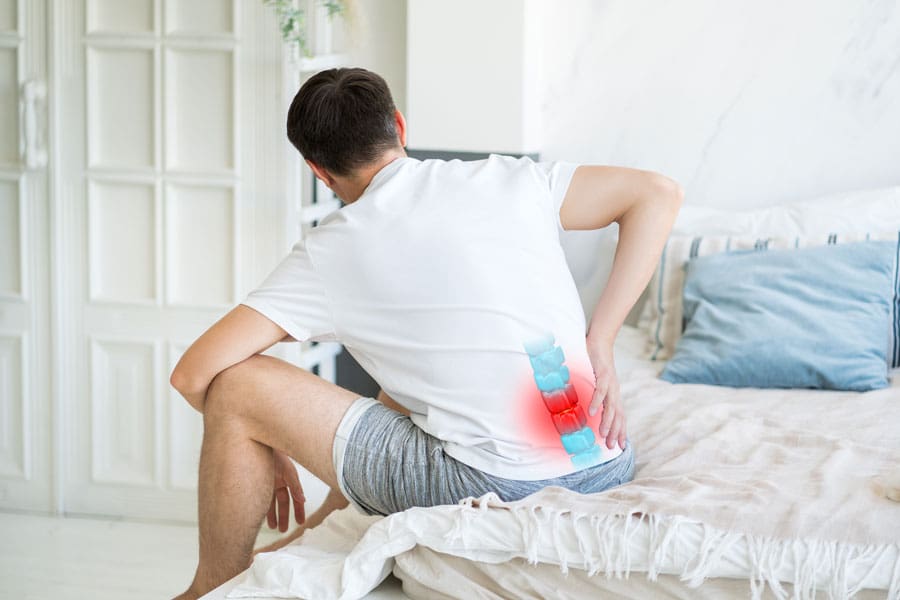Lumbar Disc Disease
Chronic lumbar disc disease is mainly caused by a change in the structure of the spinal disc. Chronic disc disease occurs due to degeneration as you age. However, any severe injury can cause a herniated disc in the lumbar area. The characteristic symptom of lumbar disc disease include lower back pain and possibly leg pain and weakness which arise from inflammation and nerve compression
Lumbar disc disease is mainly caused by a change in the structure of the spinal disc. Usually, any disc disease occurs due to the normal breakdown as you age. However, any severe injury can cause herniated discs in the lumbar area. The characteristic symptom of lumbar disc disease, lower back pain, usually occurs from inflammation and abnormal instability.
Symptoms of Lumbar Disc Disease
Symptoms of lumbar disc disease vary, but the most common signs include…
- Lower back pain: Pain in the lumbar spine is the most common symptom of lumbar disc disease. This pain may spread to other parts of the body including the groin, buttocks, and upper thighs.
- Occasional pain spikes: Lumbar disc pain may get intense for days or weeks and then become mild again. These occasional pain spikes can be sudden and severe, leading to reduced mobility.
- Tenderness: The lower back may become tender and sensitive to touch. The tenderness is due to muscle tension and inflammation surrounding the diseased disc.
- Leg pain: Symptoms including numbness, weakness, and pain may occur in the buttock, hips, and legs if the nerve roots are being compressed.
- Feeling of giving out: Leg weakness: A sudden feeling of instability or weakness can create the sensation that your legs may give out.
Treatments for Lumbar Disc Disease
Treatment for lumbar disc disease mainly concentrates on reducing pain, improving mobility, and stabilizing the spine. The therapy includes different pain management techniques, physical regimes, and surgery if required.
- Pain medication: Several over-counter-pain medications help in reducing inflammation, the main reason behind stiffness, discomfort, and nerve irritation. Reduction in inflammation decreases pain as well.
- Massage therapy: Massage therapy reduces spasms and tension in the lower back muscles and decreases pressure on the spine and pain level. Apart from this, massage improves blood circulation, which provides oxygen to muscles.
- Physical therapy: Stretching and strengthening exercises targeting muscles of the hips, lower back, hamstring muscles, and pelvis can alleviate the tension, thus relieving pressure from the lumbar part.
- Steroid injections
In addition to all these treatments, minor adjustments in lifestyle, eating habits, posture, etc., can help reduce and stop the pain of lumbar disc disease.
Take Back Control – Relief From Back Pain
We know back pain can be debilitating and keep you from doing work and the activities you enjoy. Seeking help from Dr. Przybysz is your first step in conquering your back pain. We’ll work with you and your other healthcare providers to ensure a proper diagnosis and create a customized treatment plan that is right for you.
Connect with us now to book an appointment and begin reclaiming your life with less pain.
Online Appointment Scheduling
Schedule an appointment with Monarch Pain Management via our scheduling partner at growpractice.net. You can reschedule and cancel, as well.

Reclaim Your Mobility
Make an
Appointment


